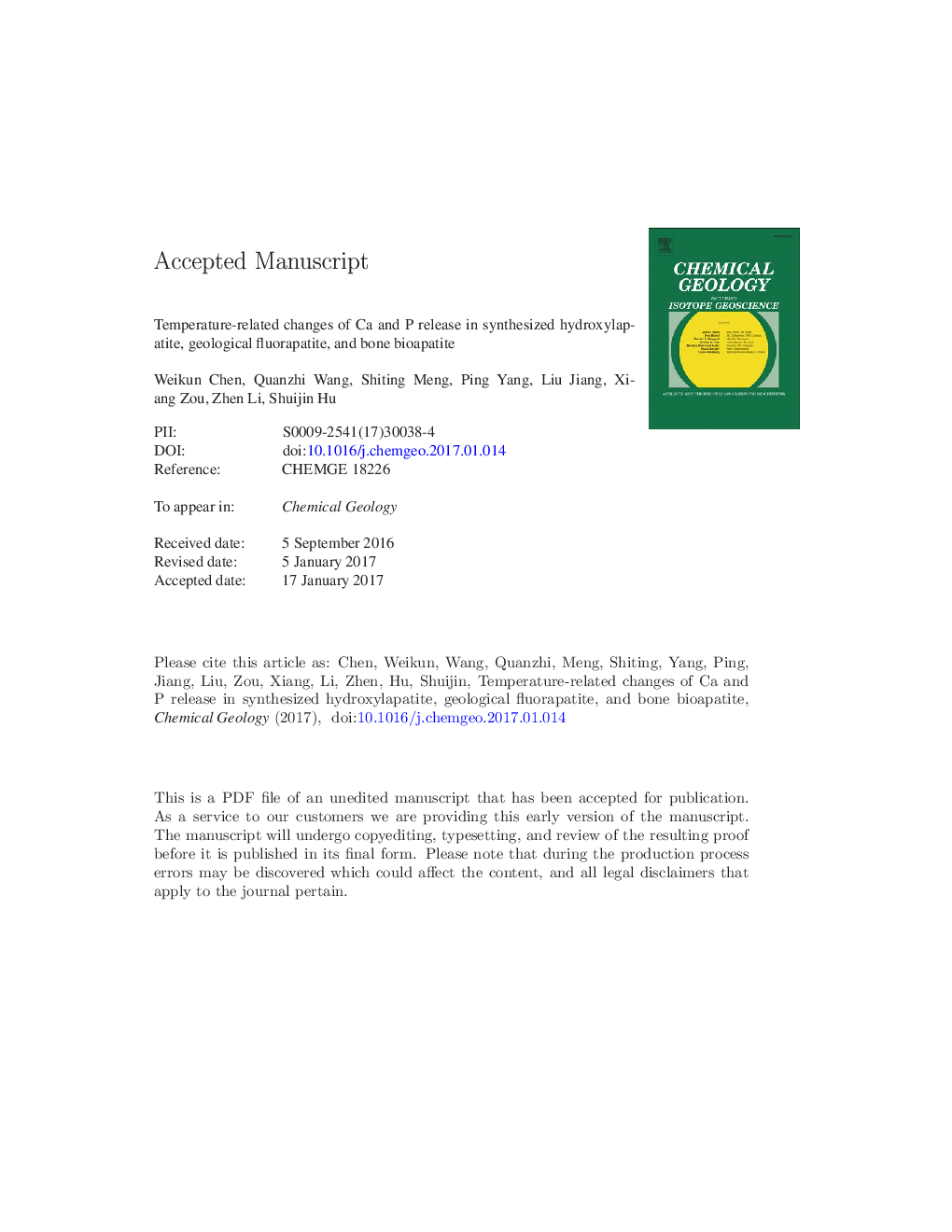| Article ID | Journal | Published Year | Pages | File Type |
|---|---|---|---|---|
| 5783050 | Chemical Geology | 2017 | 28 Pages |
Abstract
Solubility of apatite is highly addressed in mineralogical and material studies. Heating is one of the major processes in apatite industry. In this study, synthesized hydroxylapatite (HAp), geological fluorapatite (FAp), and bone bioapatite (BAp) were heated at various temperatures (100-900 °C) for analyses. The mineralogy and solubility of the three apatites were analyzed by XRD, ATR-IR, and ICP. Release of Ca and P in water for BAp reaches the maximum when heated at 200 °C, i.e., 0.215 mmol/L for Ca and 0.106 mmol/L for P. The value is higher than the maximum values (heated at 900 °C) of the solubility for HAp and FAp. The heating temperature at 600 °C is a re-crystallization point for all the three types of apatites. Especially, the crystallinity of BAp is significantly elevated at > 600 °C. Phase of geological FAp is relatively stable during heating up to 900 °C. Phase of β-TCP is present when heating HAp at 800 to 900 °C. In addition, BAp is transformed to the resemblance of HAp. However, no β-TCP was detected for BAp during heating between 800 and 900 °C, which is probably due to its Ca-deficiency. This study elucidates the correlation of phase changes of BAp and its solubility during heating, which sheds the light on its application as materials and fertilizer.
Related Topics
Physical Sciences and Engineering
Earth and Planetary Sciences
Geochemistry and Petrology
Authors
Weikun Chen, Quanzhi Wang, Shiting Meng, Ping Yang, Liu Jiang, Xiang Zou, Zhen Li, Shuijin Hu,
